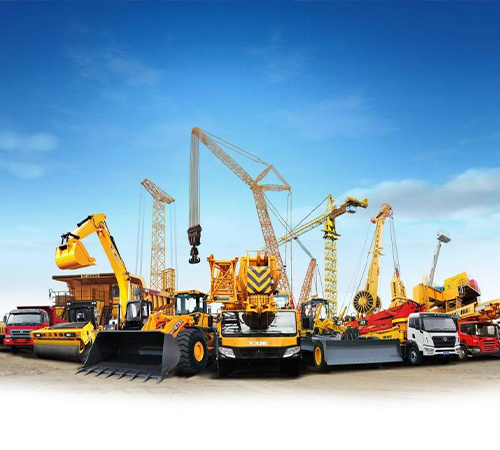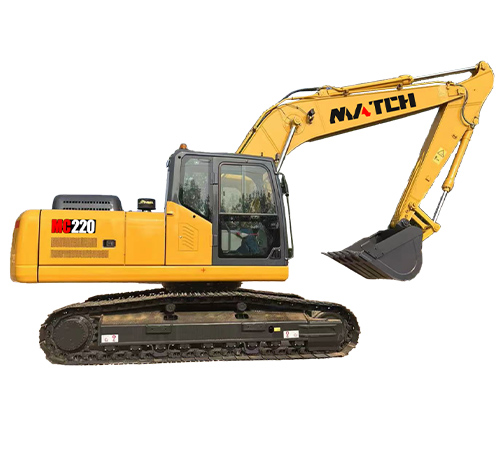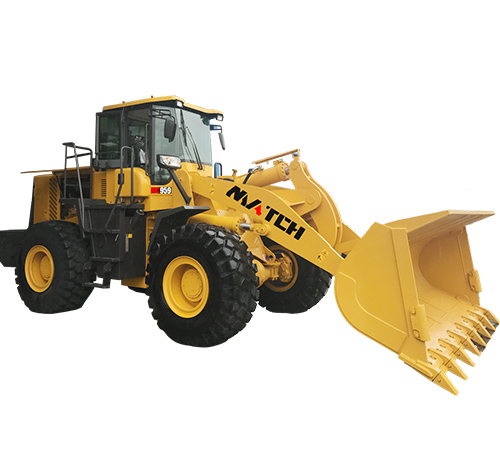- Procurement Decision-Making Process The procurement of construction machinery (for both engineering projects and trade needs) is typically a rigorous, lengthy, and multi-departmental strategic decision-making process. It generally consists of the following stages:
1. Demand Identification and Project Initiation
· Trigger Points: New project launches, replacement of aging equipment, capacity expansion, technology upgrades, and environmental policy responses.
· Internal Assessment: Clarifying the procurement budget, equipment type, technical specifications, quantity, and expected rate of return.
2. Information Gathering and Initial Supplier Selection Channels

- Industry Exhibitions: Bauma Germany, CONEXPO USA, and INTERMAT France are among the world’s top construction machinery exhibitions, serving as key platforms for acquiring information and establishing connections.
· B2B Platforms and Search Engines: Search for brand and product information on platforms like Google, Facebook, and Alibaba.
· Peer Recommendations and Word-of-Mouth: Existing partners and industry-wide word-of-mouth are crucial indicators of trust.
· Professional Media and Industry Reports: Understand industry trends and brand rankings through authoritative magazines like International Construction and KHL.
· Build a Supplier Longlist: At this stage, leading Chinese brands like Machi, Sany, XCMG, Zoomlion, and Liugong are typically already on their radar.
3. Request for Quotes and Proposal Evaluation
· Send Request for Quotes: Send a detailed RFQ to shortlisted suppliers, including technical specifications, commercial terms, and delivery requirements.
· Proposal Evaluation: The customer will comprehensively evaluate:
· Technical Solution: Whether the product meets or exceeds their technical requirements.
· Price: This includes not only the bare metal price but also the total cost of ownership, including freight, insurance, and taxes.
· Commercial Terms: Payment method, delivery time, warranty period, etc.
· Company Strength: Factory size, R&D capabilities, quality system certification.
4. Negotiation and Review
· Technical Clarification and Negotiation: In-depth communication on product details and customization requirements.
· Factory Audit: For major clients or projects, we typically send personnel or commission a third party to conduct a factory audit to firsthand verify the production process, quality management system, and R&D capabilities.
· Final Business Negotiation: Finalize the final price, payment terms, after-sales service terms, etc.
5. Decision-making and Contract Signing
· Comprehensive Evaluation: Procurement, technical, and financial departments jointly make a decision to select the supplier with the highest overall value, not necessarily the lowest price.
· Contract Signing: Contracts are typically very detailed to avoid potential disputes in the future.
6. Contract Performance and Post-Sales Evaluation
· Equipment Delivery and Acceptance: Focus on on-time delivery and equipment integrity.
· After-Sales Service: Installation and commissioning, operator training, troubleshooting response speed, and spare parts availability are key factors in determining repeat purchases and establishing long-term relationships.
Performance Evaluation: Customers continuously evaluate suppliers based on equipment performance, failure rates, and after-sales service quality.II. Key Concerns for Construction Machinery (Factors Influencing Purchasing Decisions)
1. Product Competitiveness
Quality and Reliability: This is key to breaking the stereotype of “Made in China = Low Quality, Low Price.” Whether the equipment can operate stably under harsh conditions and whether the failure rate is low.
Technical Performance: Efficiency, fuel economy, intelligence level, and environmental emission standards. Whether it can meet the stringent Stage V/Tier 4 Final emission standards in Europe and the United States is a key to entering the high-end market.
Cost-effectiveness: While ensuring quality and performance, competitive pricing is the greatest advantage of Chinese brands.

- Total Cost of Ownership
· Construction machinery companies are increasingly focused on Total Cost of Ownership (TCO), not just the purchase price. TCO includes:
· Initial purchase cost
· Operating cost
· Maintenance cost
· Spare parts cost and availability
· Equipment residual value
3. Brand Reputation and Trust
· Brand awareness, reputation, and track record in the international market.
· Successful global or local application cases, particularly in high-profile projects.
4. After-Sales Service and Parts Support
· This is paramount! Construction machinery companies are extremely concerned about:
· Localized service network: Are there offices, service centers, and authorized dealers in the target country?
· Parts availability: Is there sufficient spare parts inventory? What is the order fulfillment cycle? Can urgent parts be delivered quickly?
· Technical service team: Are there local, professional technical engineers to provide support and training?
· Warranty policy: Are the warranty terms clear and competitive?
5. Commercial Terms and Risk Management
· Payment methods: They tend to prefer safer, risk-sharing methods.
· Delivery time: On-time delivery is crucial to their project progress.
· Financing Support: For large-scale purchases, whether a manufacturer or its partnering financial institution can offer flexible financing and leasing solutions is a strong competitive advantage.
· Contract Rigor: Contracts must have clear terms and conditions, clearly defined responsibilities, and compliance with international practices and local laws.III. Recommendations for Chinese Construction Machinery Suppliers :
To address the above customer needs, Chinese manufacturers should improve in the following areas:
1. Market Positioning and Product Strategy
· Differentiated Competition: Avoid price wars in all markets. Emphasize technology and quality in high-end markets; emphasize cost-effectiveness and adaptability in emerging markets.
· Compliance First: Ensure products meet the safety, environmental, and certification standards of target markets.
2. Build a comprehensive “Product + Service” solution
· Vigorously develop localized overseas operations: Establish subsidiaries, parts centers, and training centers. Make customers feel you’re right there with them.
· Digitally Enabled Services: Leverage IoT technology to provide value-added services such as remote equipment monitoring, fault warnings, and intelligent scheduling, reducing customers’ Total Cost of Ownership (TCO).
· Flexible Financing Solutions: Collaborate with financial institutions to help customers resolve funding issues.
3. Brand Building and Communication
· Telling the Chinese Brand Story: Showcase the company’s technological strength, modern factories, and global success stories through international exhibitions, industry media, and social media.
· Transparent Communication: Proactively provide detailed technical documentation, certifications, and third-party inspection reports to build trust.
4. Channel Management
· Developing and Supporting High-Quality Distributors: Distributors are an extension of our service reach. They must undergo rigorous screening and systematic training to ensure they represent the brand image and service standards.
· Managing the relationship between direct sales and distributors to avoid channel conflicts.
IV. Targeting the Characteristics of Different Regional Markets
· High-end European and American markets: They are not price-sensitive and place great emphasis on brand, technology, reliability, environmental protection, and after-sales service. They have high barriers to entry and complex certification processes.
· Belt and Road and Emerging Markets: They are price-sensitive and prioritize product durability and adaptability to harsh operating conditions. The after-sales service network is still under development. Whoever establishes a comprehensive service system first will seize market share.
· Middle Eastern markets: They value brand and reliability, and have high requirements for adaptability to high temperatures and windy, sandy environments.
African market: Price is the primary factor, but demand for equipment durability and easy maintainability is extremely high, as repair conditions can be poor.

China’s construction machinery industry has a clear brand structure, and understanding the positioning and characteristics of each brand is crucial for purchasing decisions.













